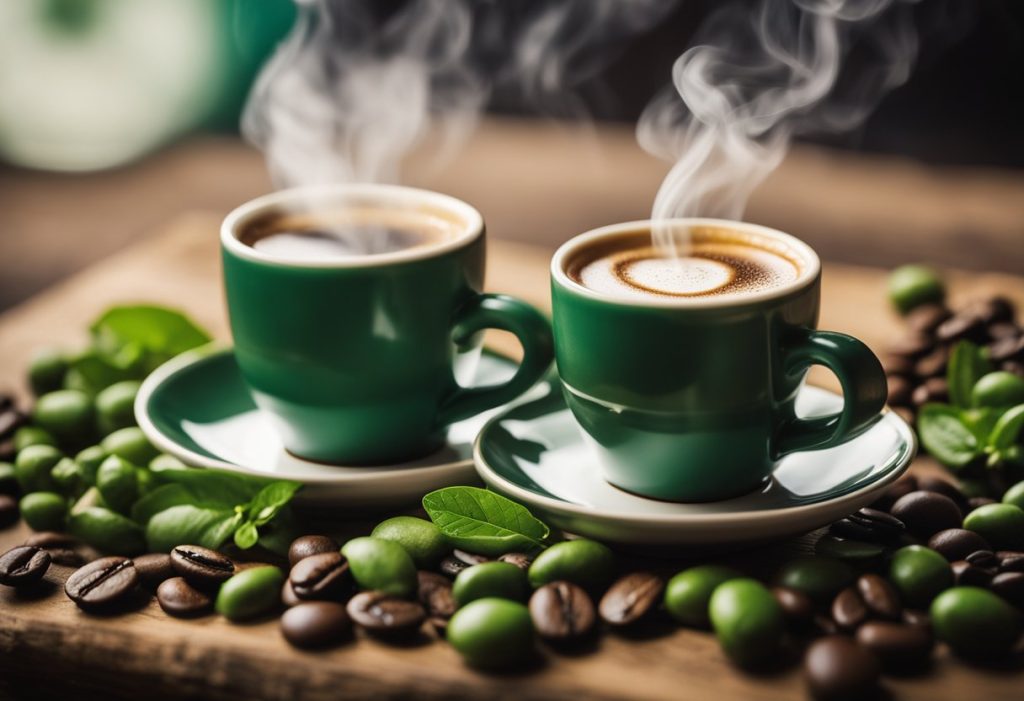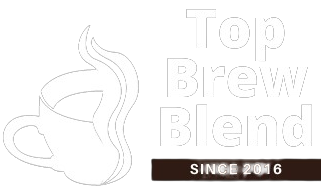What Are the Health Benefits Ristretto and Long Shot Espresso
Ristretto and long shot espresso offer distinct health benefits due to their preparation methods and concentration. A ristretto is a very short shot of espresso made with the same amount of coffee grounds but extracted with about half the amount of water, typically resulting in around 20-30 milligrams of caffeine. This process creates a concentrated shot with a more pronounced flavor and less bitterness, often characterized by unique flavor notes like chocolate or caramel. It contains less caffeine per serving compared to regular espresso shots, which can be beneficial for those seeking to limit their caffeine intake without sacrificing the robust flavor of espresso.
On the other hand, a long shot espresso, or lungo, uses more water during extraction than a typical espresso, usually resulting in about 70-90 milligrams of caffeine. This results in a larger volume, a slightly milder flavor, and more caffeine. The increased volume of water passes through the coffee grounds longer, extracting more of the caffeine and unique antioxidants found in coffee, such as chlorogenic acids and quinides. These antioxidants can help reduce inflammation and protect against certain diseases, including heart disease and diabetes, by lowering oxidative stress and improving insulin sensitivity.
Both ristretto and long shot espresso contribute beneficial antioxidants, such as chlorogenic acids and quinides, that offer protective health effects, though they differ in flavor intensity, caffeine content, and volume. For example, ristretto offers around 20-30 milligrams of caffeine with a more intense flavor, while long shot espresso provides 70-90 milligrams of caffeine with a milder taste. Choosing between them can depend on personal taste preferences, desired caffeine intake, and how these drinks fit into a balanced diet or lifestyle, potentially complementing antioxidant-rich foods like fruits and vegetables.

Health Benefits of Espresso
Espresso, a highly concentrated form of coffee, offers several health benefits when consumed in moderation. This section will explore how espresso can potentially contribute positively to our health mainly due to its antioxidant properties, its ability to boost metabolism, and its cognitive enhancements.
Antioxidant Properties
Espresso is rich in antioxidants, like hydrocinnamic acids and polyphenols. These compounds are known to fight against oxidative stress and damage caused by free radicals. For instance, a study from the University of Scranton determined that coffee is one of the primary sources of antioxidants in the average American diet, and by extension, espresso, which is simply a more concentrated coffee drink, shares this beneficial characteristic.
Metabolic Boost
Drinking espresso can provide a metabolic boost. Caffeine, its main active ingredient, is proven to increase metabolic rate by 3-11%, as shown by studies from the Department of Nutrition at King’s College, London. It stimulates the nervous system, sending signals to fat cells to break down body fat. However, the magnitude of these effects can diminish with regular caffeine intake.
Cognitive Enhancements
Espresso consumption can lead to cognitive enhancements. According to research published by the Department of Psychology at the University of Arizona, caffeine in espresso can improve various aspects of brain function, including memory, mood, vigilance, energy levels, reaction times, and general mental function. The caffeine content in a typical single espresso shot can vary, but it roughly contains 63 mg, which is sufficient to produce these effects in most individuals.
Ristretto-Specific Benefits
Ristretto shots provide distinct advantages for those sensitive to acidity and looking for a potent flavor profile with a slightly lower caffeine kick. These benefits stem from the unique preparation of ristretto espressos which involves using less water during extraction.
Lower Acidity
Ristretto shots tend to have lower acidity compared to regular espresso shots. According to a study by the Food Science Department of the University of Naples, the quick extraction process, which takes about 15-20 seconds, limits the amount of acids released from the coffee grounds, typically reducing the acidic components by approximately 5-7%.
Concentrated Flavor
The flavor of a ristretto is more concentrated due to the higher ratio of coffee grounds to water. A publication from the Coffee Research Institute highlights that ristrettos contain almost double the concentration of dissolved solids compared to regular espresso, offering a more robust taste experience.
Reduced Caffeine Content
Researchers at the Institute for Scientific Information on Coffee report that a 25 ml ristretto shot typically contains between 60-80mg of caffeine. In contrast, a standard espresso of similar volume averages closer to 63-73mg. The shorter extraction time for ristrettos results in marginally less caffeine released from the grounds.
Long Shot-Specific Considerations
Long shot espresso, often called a lungo, involves unique factors related to its caffeine content, flavor profile, and extraction process. These considerations are critical for consumers and baristas alike to understand.
Increased Caffeine
A long shot typically contains more caffeine than a standard espresso due to the greater amount of water that passes through the coffee grounds. Research indicates that while a regular espresso might have approximately 63 milligrams of caffeine, a long shot can have up to 20% more, depending on various factors like bean type and machine used.
Bitterness and Acidity
A long shot can have a more pronounced bitterness and acidity compared to shorter espresso forms. This aspect is attributed to the prolonged extraction time, which allows more of these flavor compounds to enter the cup. A study from the Coffee Science department at the University of Naples found that bitterness can increase by about 15% in a long shot compared to a ristretto.
Extraction Time and Quality
The quality of a long shot is dependent on the extraction time, which is typically between 40 to 60 seconds. Longer extractions can lead to overextraction, where too many undesirable flavors are introduced. Conversely, underextraction can occur if the time is too short. According to the Specialty Coffee Association, the optimal extraction time for a long shot sits around 45 seconds, resulting in a balanced flavor profile.
Nutritional Content Comparison
When examining the nutritional content of ristretto and long shot espressos, it’s crucial to compare their caloric value and the carbohydrate and sugar content. These components are determinative of the beverages’ impact on one’s diet.
Caloric Value
Ristretto and long shot espressos typically have a low calorie count, owing to the minimal use of ingredients beyond water and coffee. However, the caloric content can differ slightly. A single ristretto shot can be expected to have marginally fewer calories than a long shot due to its smaller volume. For instance, a single shot of ristretto might contain approximately 5 calories, while a long shot could have close to 6 calories, although these values can vary based on the amount of coffee used and the extraction process.
Carbohydrates and Sugars
Both ristretto and long shot espressos contain negligible amounts of carbohydrates and sugars. This is primarily because they are made from pure coffee grounds and water, without added sweeteners. A typical espresso shot, which is the base for both ristretto and long shots, contains less than 1 gram of carbohydrates. Given that a ristretto is more concentrated and uses less water, while a long shot has a slightly higher volume, the carbohydrate content might have a minute variance with ristrettos generally having less than long shots due to their smaller serving size.
Dietary Considerations
When considering the health implications of ristretto and long-shot espresso, it is essential to explore how they may affect digestion, heart health, and caffeine intake during pregnancy.
Impact on Digestion
Ristretto, being a more concentrated espresso shot, may increase gastrointestinal motility due to its high caffeine content. A study from the University of Iowa found that 95 mg of caffeine, roughly the amount in a ristretto, increases colonic activity similar to a meal, by 60% as opposed to water’s 30% increase. Conversely, long-shot espresso, with its higher water content and prolonged extraction time, which may contain approximately the same amount of caffeine, provides a mellower effect on digestion.
Heart Health Implications
Caffeine influences heart rate and blood pressure. According to the Journal of the American College of Cardiology, consuming up to 200 mg of caffeine can increase systolic blood pressure by an average of 8.4 mmHg and diastolic blood pressure by 5.9 mmHg. Given that a standard ristretto contains around 77 mg of caffeine and a long-shot approximately the same, moderation is recommended, especially for individuals with pre-existing heart conditions.
Pregnancy and Caffeine Intake
When considering caffeine intake during pregnancy, ACOG suggests a limit of less than 200 mg per day due to potential associations with fetal growth restriction and miscarriage. Since a single ristretto or long-shot espresso generally contains less than this recommended maximum, it suggests that an occasional espresso may be safe during pregnancy; however, individual tolerance levels may vary and consulting a healthcare provider is advisable.
Preparation and Consumption
This section will focus on the distinct brewing techniques for ristretto and long shot espresso, as well as serving recommendations to optimize the coffee experience.
Brewing Techniques
Ristretto is an espresso shot made with less water and a finer grind of coffee compared to a standard espresso. According to Twisted Goat Coffee, a ristretto contains between 60-80mg of caffeine per 25 ml, emphasizing a more concentrated flavor. Brewing a ristretto requires a precise 1:1 water-to-coffee ratio, where typically about 18 grams of fine coffee grind yields 18-22 grams of liquid.
In contrast, a long shot, or lungo, involves more water passing through the coffee grounds, which leads to a larger beverage, around double the volume of a regular espresso. Sip Coffee House explains that for a long shot, a common ratio is 1:3, meaning that 18 grams of coffee would result in approximately 54 grams of liquid coffee. This generally results in a milder taste compared to a ristretto.
Serving Recommendations
Ristrettos are often served in smaller cups to accentuate their intense flavor and rich crema. They are typically consumed quickly after brewing to experience their full array of flavors before they dissipate. Long shots, due to their larger volume and more tempered taste, can be enjoyed slowly and are often served in standard espresso cups or slightly larger cups to accommodate their increased volume.
It’s crucial to use appropriate glassware to maintain the temperature and quality of the espresso shots. Ristrettos, with their strong flavor profile, are popular among coffee enthusiasts who prefer a potent, less diluted espresso experience. Conversely, long shots suit those who enjoy a gentler introduction to the world of espresso, often appealing to individuals who find traditional espresso shots too strong.
Overview of Espresso Shots
Espresso shots are the foundation of many coffee beverages, differing mainly in water volume and extraction time.
Definition of Ristretto
Ristretto is an espresso shot extracted with approximately half the amount of water and in less time than a standard espresso. This results in a shot that’s typically 0.5 to 0.75 ounces with a higher concentration of coffee flavor and less bitterness. According to the Breville report, a ristretto offers a more pronounced and complex taste profile, highlighted by sweet and acidic notes.
Definition of Long Shot
In contrast, a Long Shot, known as a “lungo,” uses more water, around 1.5 to 3 ounces, and has a longer extraction time. Tasting Table’s insights confirm that a long shot tends to have more diluted flavors and a bit more bitterness than a ristretto. It maintains a layered taste, albeit mellower when compared to its shorter counterpart.

